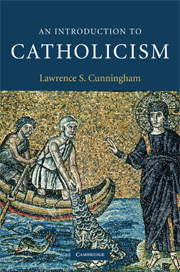Book contents
- Frontmatter
- Contents
- Illustrations
- Preface
- Acknowledgments
- 1 The many meanings of Catholicism
- 2 Roman Catholicism
- 3 Being Catholic: Some typologies
- 4 Catholicism in place and time
- 5 Catholic worship
- 6 The rule of faith
- 7 Catholic spirituality
- 8 The missionary character of Catholicism
- 9 Catholic reformation(s)
- 10 The moral life
- 11 The contemporary Catholic Church
- 12 Reading Catholicism: Bibliographical resources
- Index
- References
9 - Catholic reformation(s)
Published online by Cambridge University Press: 05 June 2012
- Frontmatter
- Contents
- Illustrations
- Preface
- Acknowledgments
- 1 The many meanings of Catholicism
- 2 Roman Catholicism
- 3 Being Catholic: Some typologies
- 4 Catholicism in place and time
- 5 Catholic worship
- 6 The rule of faith
- 7 Catholic spirituality
- 8 The missionary character of Catholicism
- 9 Catholic reformation(s)
- 10 The moral life
- 11 The contemporary Catholic Church
- 12 Reading Catholicism: Bibliographical resources
- Index
- References
Summary
INTRODUCTION
Catholic Christianity has always been aware that only the Church in Heaven will live in perfect harmony and in a state of predestined perfection. It knows that in this life, from its beginnings, the early followers of Jesus showed themselves imperfect and even, at moments, craven. It knows that in the life of the Church reflected in the early New Testament writings there were moral lapses, dissensions, and party strife. Catholicism has never understood itself as a perfectionist sect; it takes seriously the images left by Jesus to the effect that only at the Last Judgment would the Judge of all separate the sheep from the goats and the wheat from the weeds.
All that being said, the history of Catholicism also shows that in the recognition of the imperfect nature of the Church in this life, despite its equal conviction that the Church, as the rule of faith has it, is one, holy, catholic and universal, there was an equal determination to re-form the life of the Church, to cleanse it of its most conspicuous failings, and to call it back to its mandate to be the visible presence of Christ on this earth. It saw this as a duty given by its apostolic teaching. One way to say it is that the Church is one, holy, catholic and apostolic, but it can always be more unified, more holy, more universal, and more faithful to the apostolic preaching.
- Type
- Chapter
- Information
- An Introduction to Catholicism , pp. 195 - 218Publisher: Cambridge University PressPrint publication year: 2009



